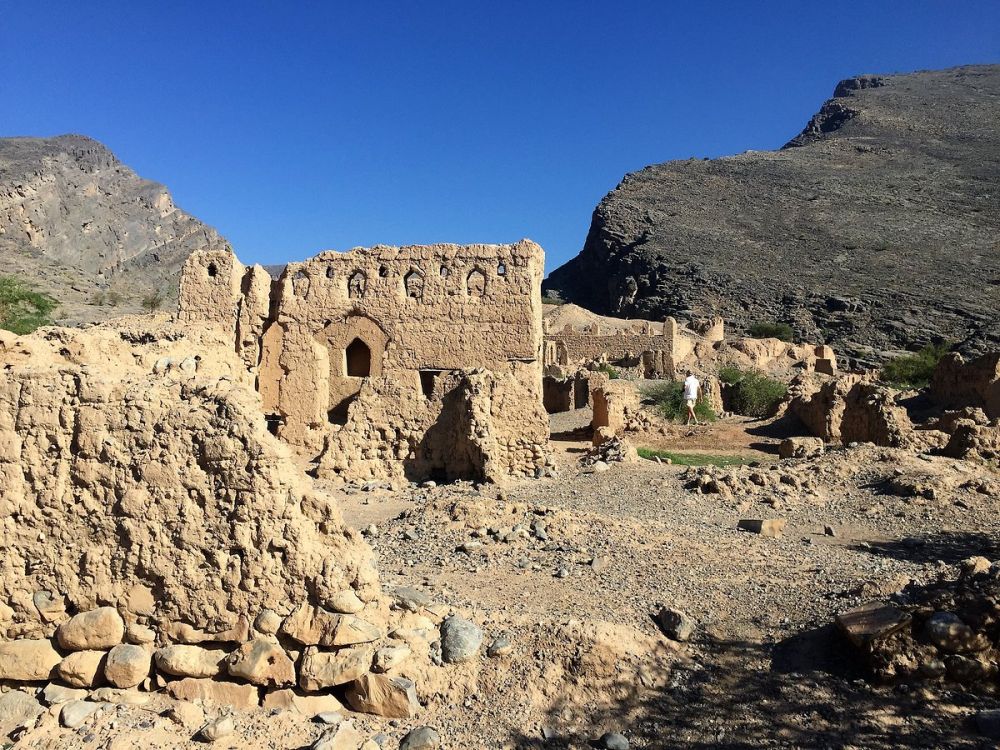

The Tanuf Ruins are a captivating historical site located near the ancient city of Nizwa in Oman. These ruins offer an evocative glimpse into the past, chronicling episodes of conflict, resilience, and change in the country. The remnants of old houses, a mosque, and a water system tell stories of the people who once inhabited them.
As Oman has opened up to international tourists, the Tanuf Ruins have gradually become an intriguing stop for those interested in the country's rich history. Originally an area less visited by travelers, Tanuf has gained significance due to its blend of natural beauty and poignant historic relevance. Nestled in the Hajar Mountains and located alongside a wadi (valley), the raw features of the ruins have piqued the interest of history enthusiasts and cultural travelers alike.
The site has become more accessible over the years, with improved infrastructure guiding visitors to the ruins. Prior to its rise as a tourism site, Tanuf was known primarily to locals and historians with a special interest in the Jebel Akhdar War and the historical events leading to the modernization of Oman.
For context, the ruins date back to the mid-20th century when the town of Tanuf was a casualty of the conflict between the Sultan of Oman, backed by British forces, and the local Imam. The town was bombed and has remained uninhabited since then, serving as a somber reminder of Oman's journey to its present-day renaissance.
In recent years, Oman has focused on sustainable tourism, ensuring that the influx of visitors does not disturb the delicate history or environment of sites like Tanuf. There has been an increase in culturally immersive experiences, where tourists can learn about Omani history, its people, and their customs in a respectful manner that benefits both visitors and local communities.
Another trend is the significant growth of adventure tourism, with visitors exploring the hiking trails around Nizwa and the Jebel Akhdar range. The area's natural geography lends itself to activities such as rock climbing, trekking, and canyoning.
Additionally, with Nizwa's prominence for its cultural significance, including its fort and traditional souq, the city has become a base for tourists looking to explore the interior of Oman. This has encouraged the development of boutique hotels and traditional accommodation that complement the experience of sites like the Tanuf Ruins.
When visiting the Tanuf Ruins, tourists can walk amongst the crumbling walls and touch the fragments of history that have shaped Oman. Interpretive signs and local guides help tourists understand the context of what they are seeing. The ghostly atmosphere of the ruins juxtaposed with the stunning Omani landscape ensures that the memory of the place remains with travelers long after they leave.
For an enriching visit, it is recommended that travelers engage with licensed tour guides who can provide in-depth knowledge about the historical significance of Tanuf and its place in Oman's narrative. These tours often incorporate visits to local artisans and stops at scenic overlooks, providing a well-rounded experience of the region's heritage and beauty.
As Oman continues to develop its tourism sector, the country's commitment to preserving its historical sites while making them accessible to the world will no doubt continue to elevate attractions like the Tanuf Ruins as integral narratives in understanding the rich tapestry that is Oman's history.